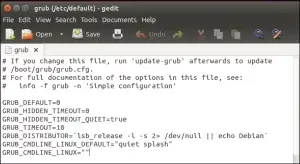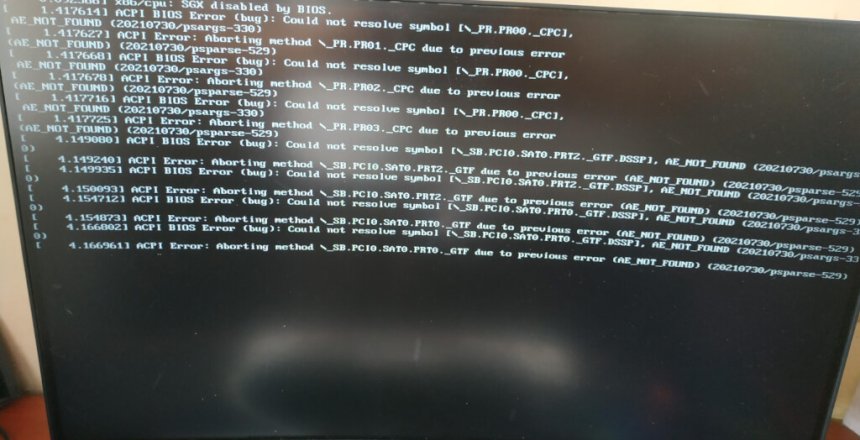This post is more for Tubbs Computer Supplies as they install Linux Mint on a daily basis. There are error messages that flash up on the screen when booting the Linux kernel and are caused by incompatibilities with the BIOS and the kernel. They are more informational than useful in most cases, so you can hide them using loglevel.
What are the loglevels?
The loglevels are how much the Linux Kernel tells the user what is going on, the numbers are between 0-7 with the number increasing the information available to the user, each level adds the previous state to it, so a 7 shows everything. The kernel uses the following log levels for the severity of the tasks:
- zero (o) will show the kernel emerg logs, when the kernel has an emergency and a crash is imminent or a serious fault has occurred and the system could be unstable as a result.
- 1 is the alert log, something the user needs to be immediately notified about, like if the administrator runs the shutdown command and all users are alerted that the system is going down.
- 2 is for critical errors, such as serious hardware or software failures.
- 3 is for non-critical errors, such as a device driver failing to work or drive not mounted.
- 4 is for warnings, the messages that are below the level of error.
- 5 is for notices, not really warnings but things the user might need to be aware of.
- 6 is for informational, the kernel tells the user of tasks it performs.
- 7 is debug, so will show in great detail what is going on with processes and activities as they happen.
The default is loglevel 7 at startup and 4 for general console operations.
However, you can change the console loglevel temporarily with:
echo "3" | sudo tee /proc/sys/kernel/printk
This will change the loglevel to 3 and hide the warnings from the display.

Change loglevel at boot time
Since the kernel will print out all the debug level messages on boot by default you need to add a loglevel parameter to set how much information the kernel will provide while starting the computer
You need to change the grub configuration file:
sudo nano /etc/default/grub
You need to enter your password to edit this file as root.
You will see the GRUB_CMDLINE_LINUX_DEFAULT line, add loglevel=3 at the end before the last double quotes.
For example: GRUB_CMDLINE_LINUX_DEFAULT=”quiet splash loglevel=3″
Press Ctrl-X and then press Y to save the file.
sudo update-grub
This will save the changes to the boot files, so that next time you reboot the white text won’t appear.

